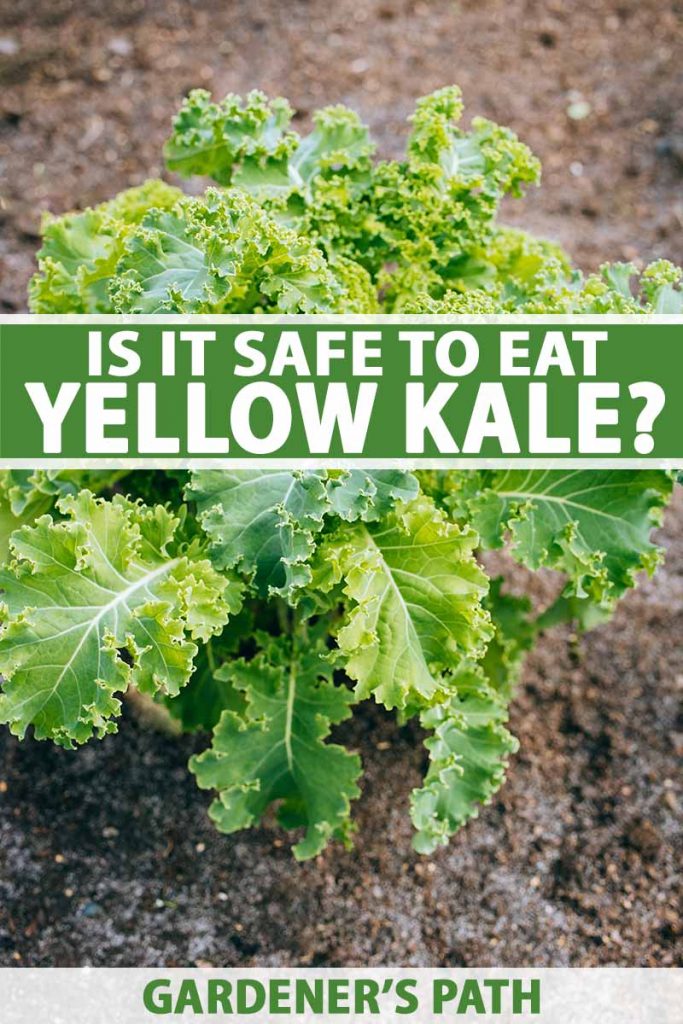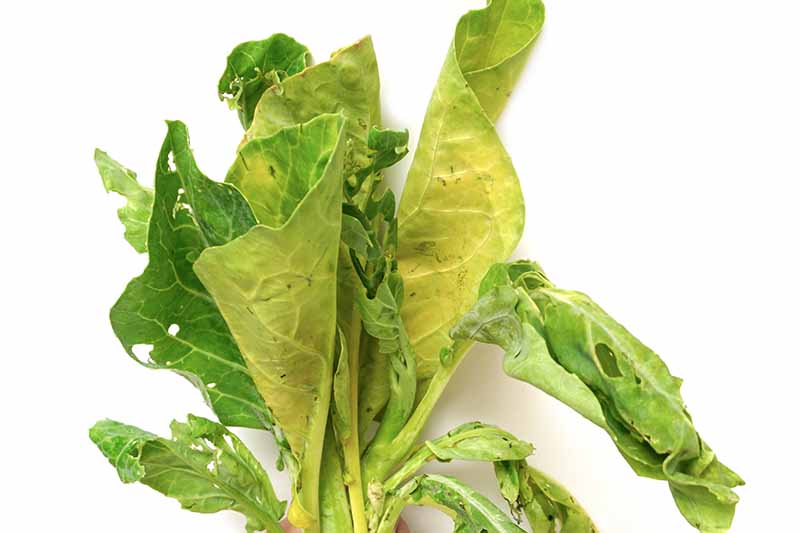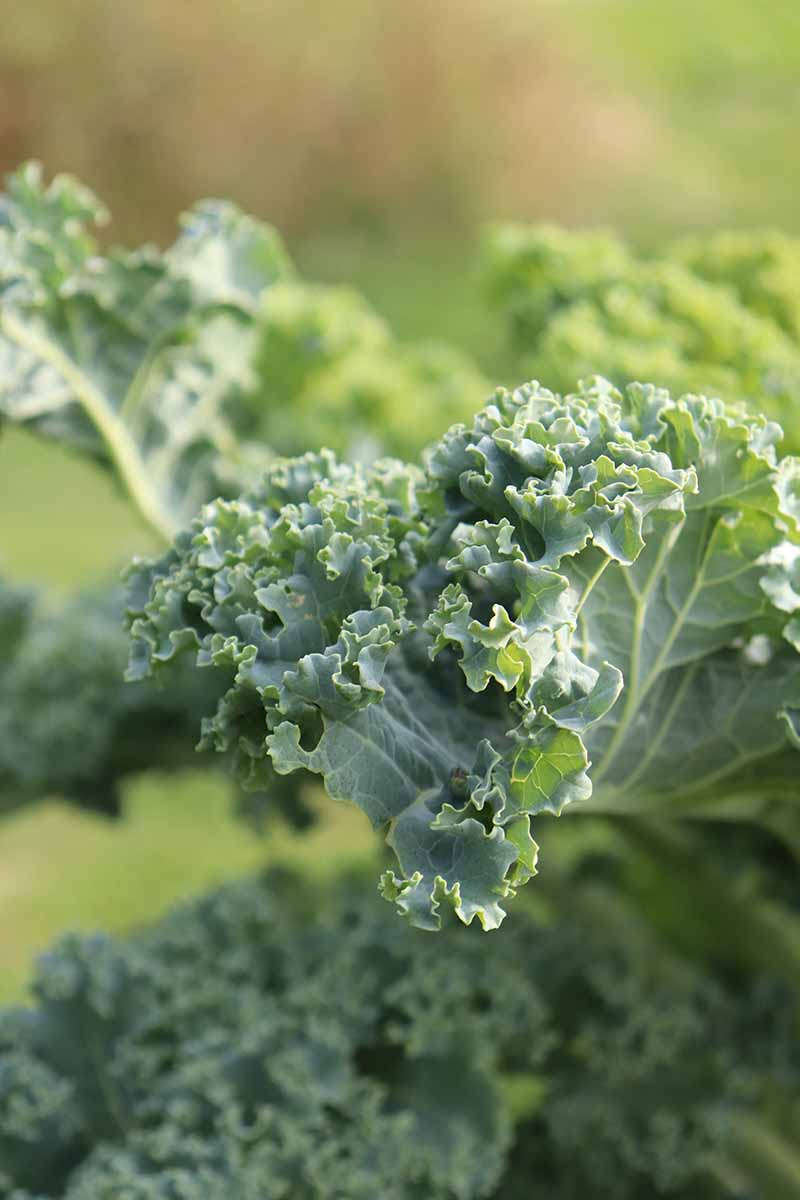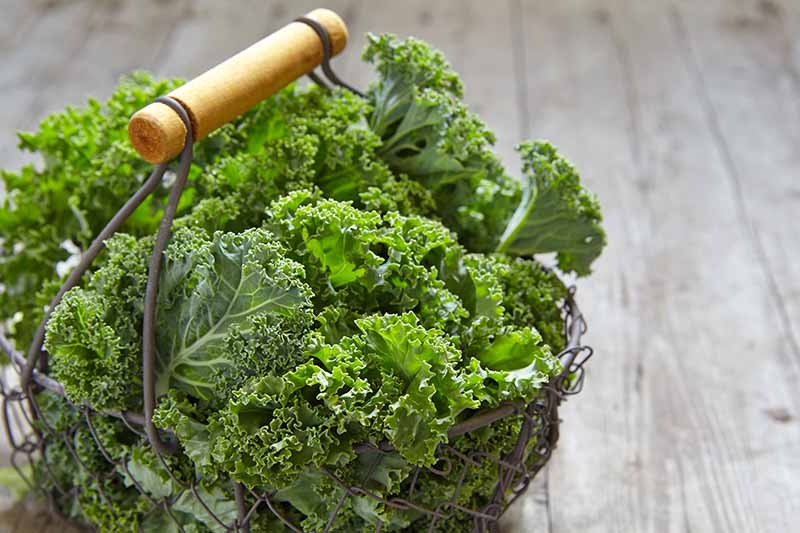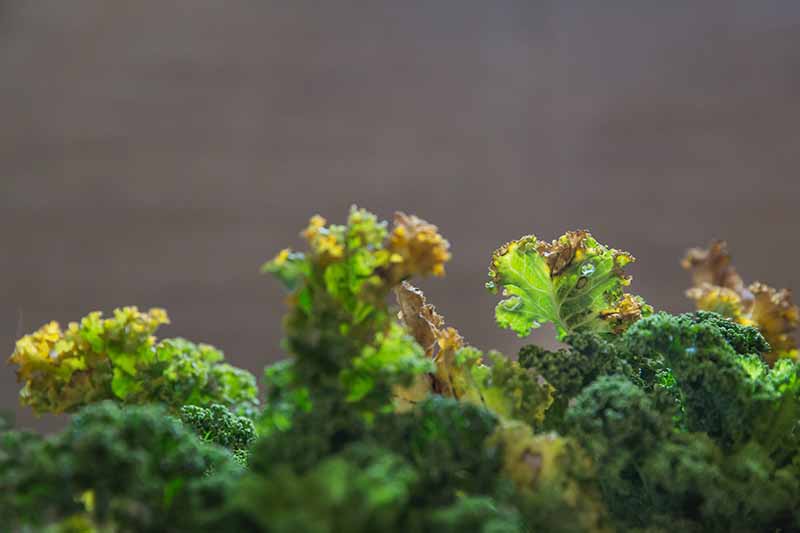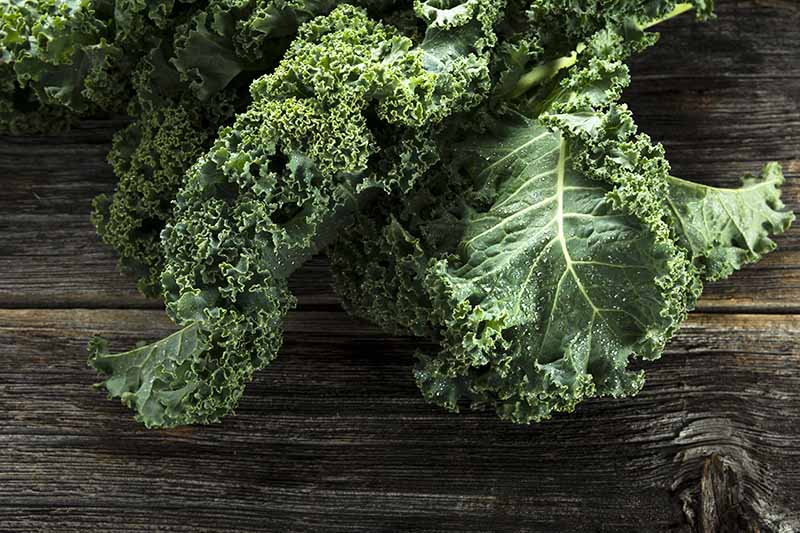A popular member of the cabbage family, Kale (Brassica oleracea var. acephala) is a cruciferous vegetable, like broccoli, cauliflower, and brussels sprouts. It is available in a variety of types, including lacinato, curly, ‘Red Russian’, and Chinese kale. While all are highly nutritious, they vary in color, shape, texture, and even flavor. We link to vendors to help you find relevant products. If you buy from one of our links, we may earn a commission. Most mature leaves are a shade of green or a stunning deep purple. So, when you notice a few turning yellow, you may be wondering: are they still safe to eat?
Why Kale Turns Yellow
While yellowing can simply be a sign that your crop has gotten old, it may also be due to improper storage or disease.
If it is in your fridge, yellowing is a sign of chlorophyll – the pigment responsible for the green color – breaking down as the leaves age. This happens naturally and it’s nothing to worry about.
As a result, storing kale for too long can result in leaves turning yellow over time. However, if it was fairly fresh, then you may not have been storing it properly, causing it to age and go bad more quickly. In general, fresh from your garden, it should last 5-7 days if stored correctly.
So What Does Storing Correctly Mean?
The most important tip is not to wash your harvest before storing it. Otherwise, the excess moisture can cause it to rot more quickly. Instead, wait to rinse it until you’re ready to start cooking or eating it.
The best way to store it is by placing the unwashed greens in a bag or container in your fridge. Just be sure not to seal the bag or container completely, as steady airflow can help it to last longer. Try to avoid keeping it in the colder parts of your fridge, as the chilly air can cause it to age faster. Instead, keep it in the crisper drawer where it’s slightly warmer. As mentioned earlier, yellowing can also be due to infections and diseases. For more information on what these diseases are and how to avoid them, be sure to check out our article to discover what causes the yellowing and thinning of kale leaves.
Is It Safe To Eat?
Whether kale that’s turned yellow is safe to eat depends on why it turned yellow in the first place.
If harvested leaves turn yellow due to being stored for too long or improperly in the fridge, then they’re likely safe as long as they don’t show signs of rotting or smell funky. However, they will probably be less flavorful than they would be if enjoyed at their peak of freshness, and may be unpleasantly bitter. So, despite being safe, your yellowing greens may not be that enjoyable to eat! Now, if they turned yellow due to an infection, or have signs of rotting (as discussed below), you should throw them away. Spoiled greens have the potential to make you sick. Signs that your kale is no longer safe to eat include:
Black specks on the foliage Black, white, or rust-colored spots, which may signal a fungal infection Wilted, soggy, and/or slimy texture An unpleasant, sulfur-like smell
Store Kale Longer By Freezing It
If your homegrown crop keeps turning yellow in your fridge, another tip is to only pick the amount that you plan to use right away, and leave the rest in your garden. If you notice that the leaves on your growing plants are just starting to turn yellow, you can extend their culinary life by harvesting them immediately and storing the greens in the freezer. To freeze fresh kale, make sure to rinse it thoroughly and remove the stems. Then you can place it in zip-top storage bags and keep in the freezer for four to six weeks. Defrost before cooking and enjoying, or add the raw greens straight to your blender from the freezer to make a smoothie. To extend its frozen shelf life even more, quickly blanch the leaves in boiling water, submerge them in an ice bath to stop the cooking process, and dry before freezing in an airtight container or zip-top storage bag. If it’s been blanched first, it can keep for up to one year in the freezer.
However, if the plants in your garden are turning yellow, then it’s important to figure out what’s causing the leaves to change color. If it’s due to an infection or disease, it’s recommended that you get rid of the infected leaves and not eat them – to avoid potentially getting sick. How do you keep your kale plants from yellowing in the garden, or after harvesting? Share in the comments below! Interested in learning more about planting and growing kale? Be sure to check out these articles next:
What Month Should You Sow Kale? How to Harvest Kale How to Keep Kale from Wilting in the Garden
© Ask the Experts, LLC. ALL RIGHTS RESERVED. See our TOS for more details. Uncredited photos: Shutterstock. Additional writing and editing by Clare Groom and Allison Sidhu. The contents of this article have been reviewed and verified by a registered dietitian for informational purposes only. This article should not be construed as personalized or professional medical advice. Gardener’s Path and Ask the Experts, LLC assume no liability for the use or misuse of the material presented above. Always consult with a medical professional before changing your diet, or using supplements or manufactured or natural medications.
